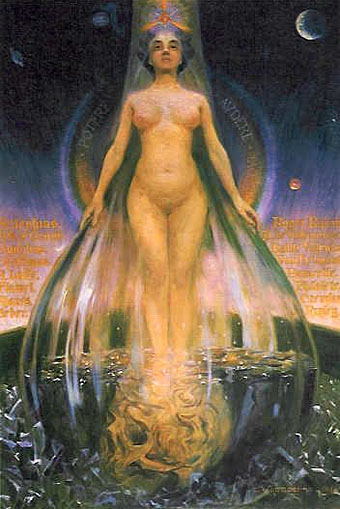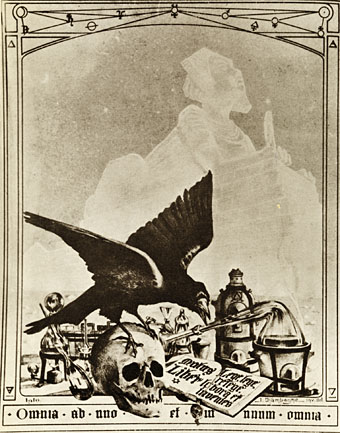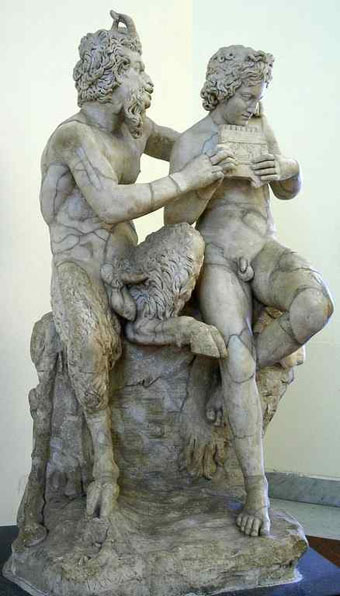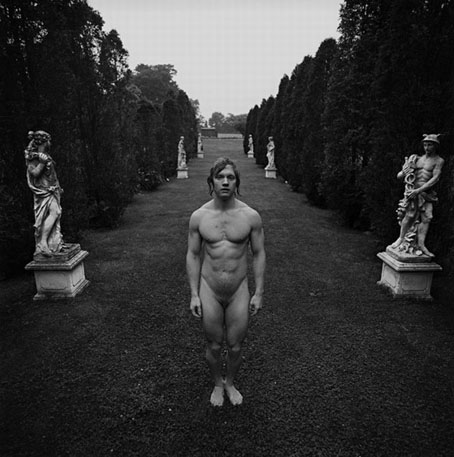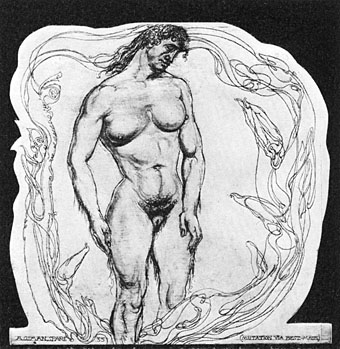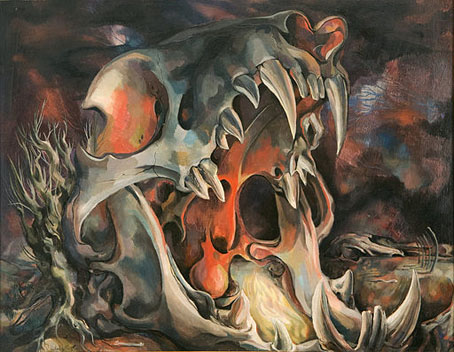
Skull Vision by Michael Ayrton (1943).
The Dark Monarch: Magic and Modernity in British Art: great title for an exhibition, a shame that it’s all the way down in Cornwall at Tate St Ives.
This group exhibition takes its title from the infamous 1962 book by St Ives artist Sven Berlin. It will explore the influence of folklore, mysticism, mythology and the occult on the development of art in Britain. Focusing on works from the beginning of the twentieth century to the present day it will consider, in particular, the relationship they have to the landscape and legends of the British Isles. (More.)
Artists featured include Graham Sutherland, Paul Nash, Barbara Hepworth, Henry Moore, Ithell Colquhoun, Cecil Collins, John Piper, Leslie Hurry and John Craxton. Among the contemporary artists there are Cerith Wyn Evans, Mark Titchner, Eva Rothschild, Simon Periton, Clare Woods, Steven Claydon, John Stezeker and Derek Jarman. Austin Osman Spare is notable by his absence but then that’s no surprise, the major occult artist of the 20th century never rates more that a passing mention from the art establishment. One nice surprise is seeing Ithell Colquhoun (1906–1988) featured in her second major British exhibition this year. (Her work is also present in the Angels of Anarchy exhibition running at the Manchester Art Gallery.) Colquhoun was a contemporary of Spare’s whose work turns up in occult encyclopaedias or overviews of the minor current of British Surrealism but she’s still largely unheard of outside those circles.
The Tate exhibition may be awkward to visit but there’s an illustrated catalogue available featuring contributions from quality writers including Brian Dillon, Philip Hoare, Jon Savage, Jennifer Higgie, Marina Warner, Michael Bracewell, Alun Rowlands and Martin Clark. Michael Bracewell has a piece about the exhibition at Tate Etc while Brian Dillon has an excellent essay in the Guardian connecting John Dee’s mysterious obsidian scrying mirror with some of the works on display.
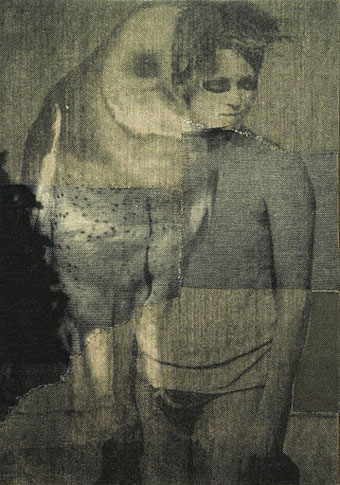
Untitled by David Noonan (2009).
• Artist of the week: David Noonan
• Ithell Colquhoun at A Journey Round My Skull
Previously on { feuilleton }
• Angels of Anarchy: Women Artists and Surrealism
• A=P=P=A=R=I=T=I=O=N
• In the Shadow of the Sun by Derek Jarman




